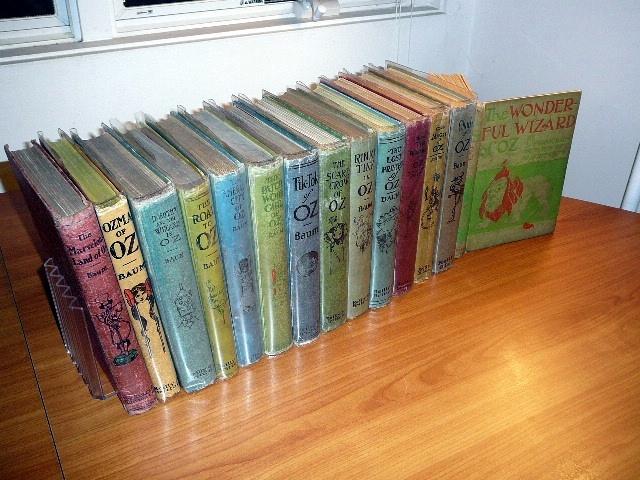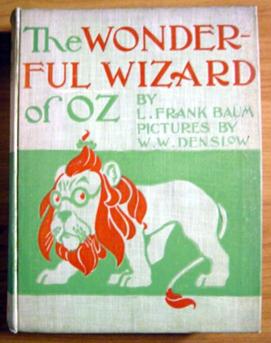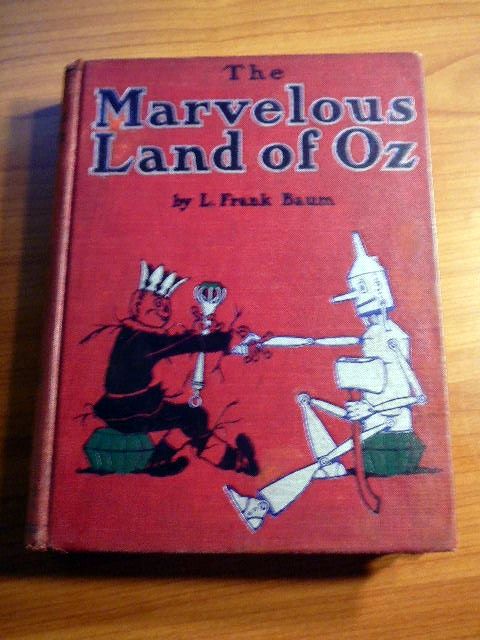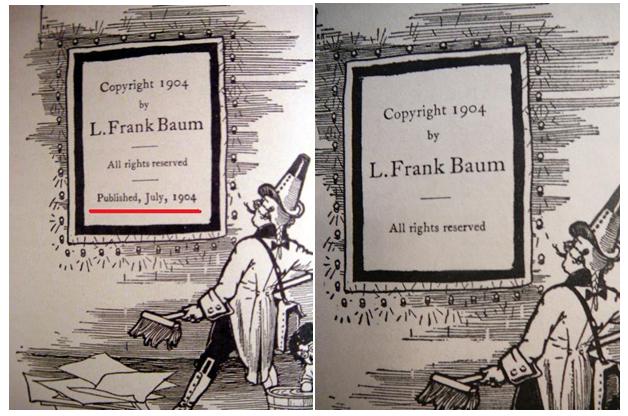

When I talk to various long-time owners of rare books it never ceases to amaze me how much people paid for some Oz books before the invention of the Internet. It is understandable that book sellers in the past had to derive prices for the books from their experiences. Also, absent of Oz books' price guides, many sellers charged different prices for identical Oz books in different stores. Since the Oz books were hard to find, collectors were willing to pay premium prices for those books.
Quite often when I obtain the Oz book from a member of the general public I see inside the cover the price written in pencil that the owner paid for the book. Sometimes the owner overpaid for the book and is surprised at how much less his or her book is selling today vis-a-vis what he or she paid originally.
These days, however, when a collector has access to the Internet that enables the collector to both find Oz books and research their prices, many collectors are able to get the rare books at the market prices. Since the main factor that will affect Oz books' prices from now on is the availability of Oz books and trends of the Oz market, I decided in this issue of my newsletter to offer my opinion on the timing of purchasing the Oz books under the current conditions.
The book trade--collectors, dealers, librarians, and the few remaining book- scouts--has changed radically since the introduction of the Internet, Ebay and the large book search services over the last ten years.
Traditional book stores that started 50+ years ago, issued a few catalogs every year in the 1960s and 1970s . Over the years many book stores had gone through many changes due to the rise in rents for large spaces to store books in cities and suburbs. Despite these changes over the last three decades, nothing could have prepared any books store for the changes in the last ten years. The Internet has drastically and irrevocably changed the way stores sell rare books and the way collectors and other book purchasers buy their books.

Although the Internet has been around awhile, it was only in the late 1990s that the number of books online increased dramatically. Rare books that previously may have taken years to track down can now be located in an instant using the Internet.
Based on my research, at the beginning of 1998, Advance Book Exchange (ABE) had 1,500 "dealers" or subscribers online, listing a cumulative total of approximately 4,000,000 out-of-print books. By the middle of 1999, the numbers were up to 4,500 and 12,000,000, respectively. Now, I believe, there are approximately 13,500 subscribers with about 110,000,000 books!
There is no doubt that the availability of so many rare books has reduced the prices of common books. In the past, dealer's book-buying universe was defined by the catalogs received, the stocks in the local stores, and books seen in bookstores on visits to other towns or cities. Now, one can see almost the total availability of titles worldwide, as so many rare books are on the Internet.
Book prices are set by supply and demand. If the supply goes up drastically, as it has due to the Internet, demand is sated and prices go down. So, if there are fifty copies in a very good condition of a certain first edition Oz book, the prices of those books will be less than comparable copies ten years ago.

This represents a great opportunity for collectors to buy collectible Oz books copies at reasonable prices. I know from a personal experience, for example, that there are so many copies of other common titles on the Internet, that it will take several years before the prices for those titles go up. I also noticed that for Oz books where there were twenty or thirty collectible copies of a specific Oz title five years ago, now there might be only two or three. There could be twenty copies online, but eighteen will be reprints, ex-library, or beaten-up copies. The other day, for instance, I was looking for a good complete copy of the rare book "Marvelous Land of Oz" first edition outside of my store. I only found two copies of 1st edition, 2nd state, with one selling for $1250 and another one for $6000. I am sure that if I had looked a few years ago I would have found many more available copies and would have a better selection of the condition as well.
Based on my research of past prices of rare books in general, I noticed a marked increase in prices and interest starting in late '80s, after the stock market downturn. Based on the various price guides that I reviewed from '70s and early to mid '80s, the collectible books experienced a normal inflation adjustment. During mid '80s, particularly 1986 and 1987, the market stayed flat, but in 1988 the prices went up significantly for high grade collectible books. It's not that other prices didn't go up too, just not at the same rate. Current market downturn reminds me of that period in late '80s when people were looking for alternatives to stock investments.
Below are some interesting comparisons for fine copies of the first edition books:
1. J. D. Salinger's "Catcher in the Rye" in the dust wrapper was $100 in 1978, $500 in 1986, $7,500 in 2000, and $15,000 or more now.
2. Harper Lee's "To Kill a Mockingbird" was $50 in 1978, $250 in 1986, $7,500 in 2000, and $15,000 or more now.
3. First state copy of "Marvelous Land of Oz" I personally sold for $500 in 2003, for a $1000 with missing title page in 2005, have seen another copy sold on Ebay in 2007 for $3000, and right now am selling my current copy for over $10,000
(For comparisons of prices of other Oz books prices during same period, please check my earlier newsletter article.)

One of the differences between first and second state copies of the Marvelous Land of Oz is shown above in copyright page. Photo on the left with July 1904 is from the second state copy and one on the right is from the first state copy.
The major difference between the majority of other rare books and the Wizard of Oz books, though, is that the Wizard of Oz story is so deeply imbedded in American culture that almost on a weekly basis I find some ties to it through the media. For example, in conjunction with death of Michael Jackson, it was indicated repeatedly that he played a Scarecrow in the movie "The Wiz" in 1978. The best-selling author Michael Connelly in his most recent book "The Scarecrow" uses various facts from the Oz series, such as Denslow Associates (William Denslow illustrated the Wizard of Oz title), Fred Stone (appeared in the first Broadway musical in 1902), references to a character Dorothy from Kansas, etc.
Oz books titles are getting scarcer and scarcer every day and some first editions could not be found any more online, such as, for example, the 1st state copy of the "Marvelous Land of Oz."
I think that the current period will be looked back on in ten years or so as the Emerald Age when the supply forced the prices of rare books to go down, and when savvy buyers took advantage of the market to build good Oz collections.
Return from this Rare books:Current Outlook article page to Oz Newsletter page
Return from this Current Outlook article page to Wizard of Oz books home page